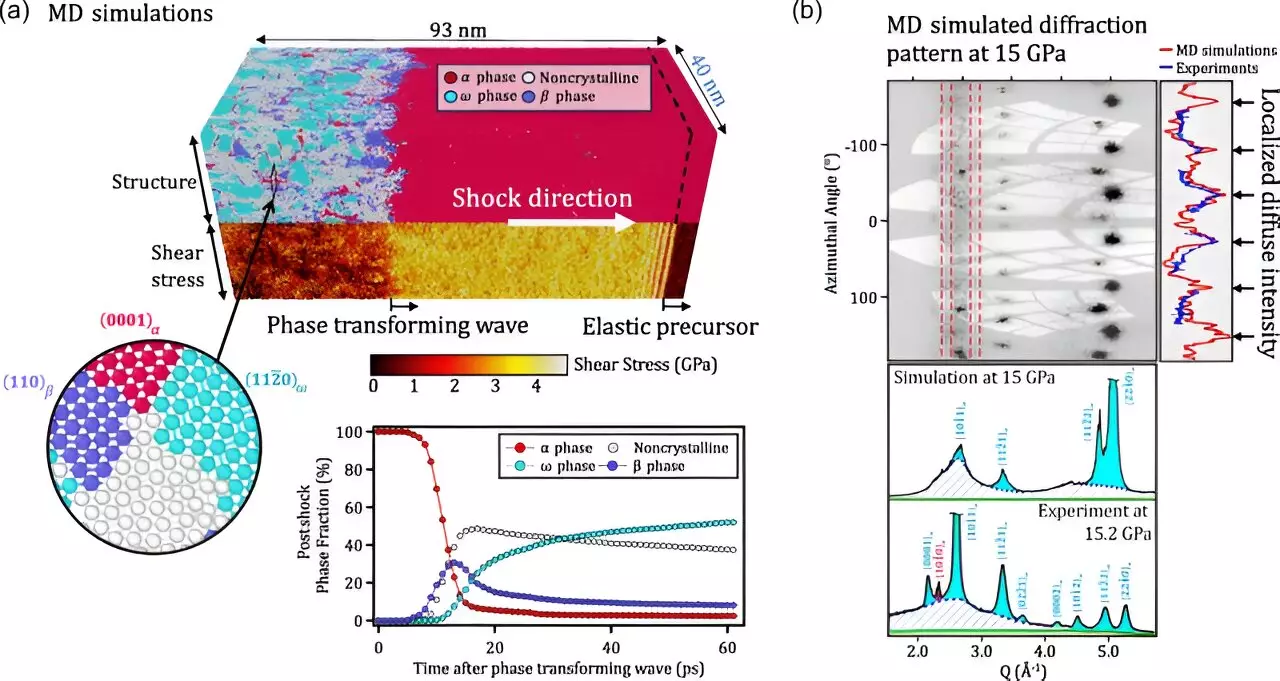Materials science plays a pivotal role in the advancement of modern technologies, especially where extreme environments demand specific properties. Nuclear energy systems, military applications, and other high-stress scenarios necessitate materials that can endure extreme pressures, elevated temperatures, and corrosive conditions. As demand grows for innovative materials that are not only cost-effective but also lightweight and sustainable, understanding the fundamental behavior of these materials at the atomic level becomes increasingly important. This is where recent research into zirconium, a metal used extensively in high-stress applications, sheds new light on material performance.
Scientists from Lawrence Livermore National Laboratory (LLNL) conducted a groundbreaking study on single crystal zirconium, revealing unexpected complexities in its deformation behavior when subjected to high pressures. Their findings were published in respected journals, including Physical Review Letters and Physical Review B. Traditionally, materials under stress exhibit predictable behaviors, such as dislocation slip or phase transitions, but the research team discovered that zirconium displayed a multifaceted response that includes not just these typical mechanisms, but also includes shear-induced amorphization and crystallographic twinning.
Saransh Soderlind, the lead scientist of the study, emphasized the significance of understanding these microscopic mechanisms. Such knowledge is essential in constructing predictive models for how materials behave under duress, which is crucial for designing next-generation components that can maintain integrity in extreme environments.
The LLNL researchers employed cutting-edge femtosecond in-situ X-ray diffraction tools to study zirconium at an unprecedented scale. This innovative approach allowed them to observe the atomic structure of zirconium as it underwent high-pressure compression over nanosecond timescales. In a surprising revelation, they detected atomic disorder—an anomaly for elemental metals—and identified numerous pathways leading to phase transformations. These observations were absent in common polycrystalline forms of zirconium, showcasing the uniqueness of this single crystal study.
The collaboration between experimental observations and complex multi-million atom molecular dynamics simulations reinforced the validity of their findings, leading to a more nuanced understanding of physical deformation under extreme conditions. This intricate dance of atomic movements not only alters our perception of zirconium but suggests that other metals may behave similarly under extreme pressure.
Understanding the behaviors of metals like zirconium at high pressures is vital, especially considering its applications in nuclear industries where it is employed in fuel rod cladding due to its strength and minimal neutron absorption properties. The implications of this research reach far beyond zirconium; they open avenues for the development of advanced materials capable of thriving in drastic environments.
As scientists continue to unlock the secrets of material behavior under extreme stress, we may see significant advancements in technology across various fields, from nuclear energy to aerospace. The road ahead appears promising as researchers push the boundaries of our understanding, leading to more resilient and efficient materials for future applications. Through relentless exploration and innovation, the complexities revealed by this zirconium study could very well reshape the landscape of material science and engineering.

